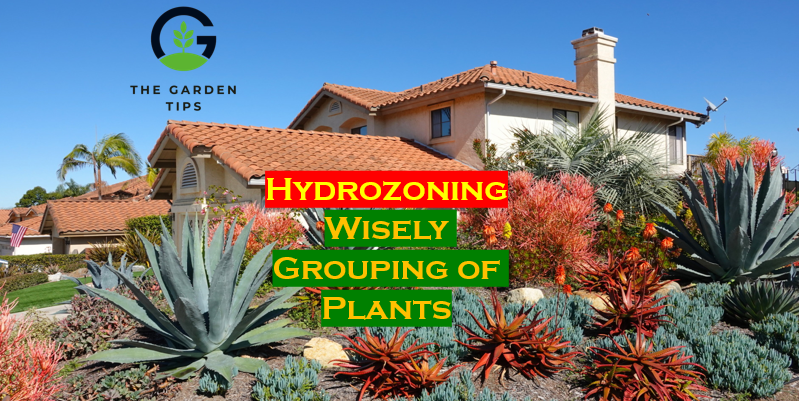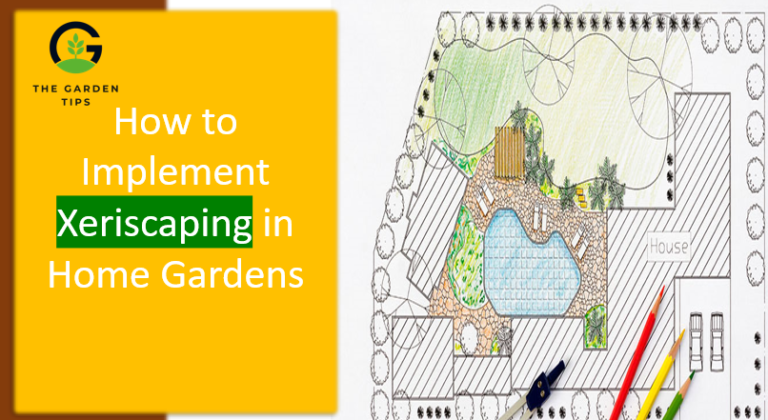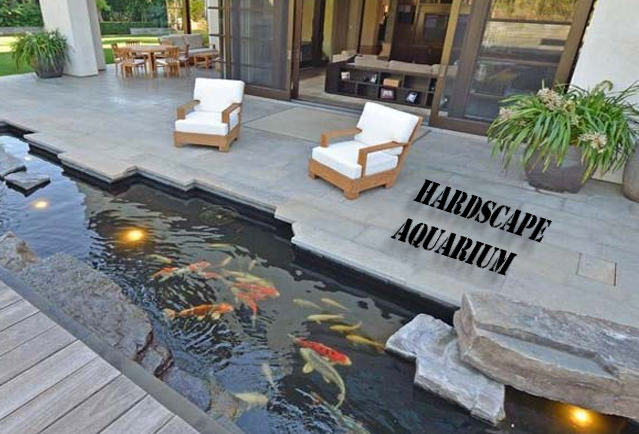By hydrozoning, gardeners can create a more efficient and sustainable landscape by using water more effectively and reducing the need for irrigation. Also, it makes the garden look more beautiful by selecting plants that are well-suited to the garden’s microclimate.

Hydrozoning involves grouping plants together based on their water needs and creating different zones in the garden based on the water requirements of the plants in that zone. Here are a few examples of hydrozoning in action:
High-Water Zone Plants
This zone would include plants that require a lot of water, such as vegetables and annual flowers. Examples of plants that could be included in this zone are tomatoes, cucumbers, melons, marigolds, zinnias, and petunias. These plants should be placed in an area of the garden that gets full sun and has well-draining soil. They should water deeply and regularly, as they have high water needs.
High-water zone plants require a lot of water to grow and thrive. These plants are typically annual vegetables and flowers with high water requirements during their growing season. Some examples of high-water zone plants include:
Tomatoes: are one of the most popular vegetables grown in gardens, requiring a lot of water to produce high yields. They prefer well-drained soil with a pH between 6.0 and 6.8 and should water deeply and regularly.
Cucumbers: Cucumbers are another popular vegetable that requires a lot of water to grow. They prefer a pH between 6.0 and 7.0 and should water deeply and regularly.
Melons: Melons, such as watermelon and cantaloupe, are also high-water zone plants. They prefer a pH between 6.0 and 7.0 and should water deeply and regularly.
Marigolds: Marigolds are popular annual flowers that require a lot of water to grow. They prefer well-drained soil with a pH between 6.0 and 7.0 and should water deeply and regularly.
Zinnias: Zinnias are another popular annual flower that requires much water to grow. They prefer well-drained soil with a pH between 6.0 and 7.0 and should water deeply and regularly.
Petunias: Petunias are also popular annual flower that requires a lot of water to grow. They prefer well-drained soil with a pH between 6.0 and 7.0 and should water deeply and regularly.
Countries include High-Water Zone Plant
Netherlands: The Dutch have a long history of living with water and have developed several techniques for dealing with flooding, including using high-water zone plants. One example is the common reed (Phragmites australis), often used to create natural dikes and water-storage areas.
Bangladesh: The country is situated on the Brahmaputra and Ganges rivers delta and is frequently flooded during the monsoon season. High-water zone plants such as water hyacinth (Eichhornia crassipes) and water lettuce (Pistia stratiotes) are commonly found in these areas, helping to absorb excess water and prevent erosion.
United States: In the southern United States, particularly in the Gulf Coast region, plants such as bald cypress (Taxodium distichum) and water tupelo (Nyssa aquatica) are commonly found in swampy, flooded areas. These trees can survive prolonged periods of flooding by developing specialized root systems that allow them to access oxygen while submerged.
Other examples include:
- Mangrove Trees in coastal areas of many tropical countries
- Cattails in many wetland areas in the world.
These are just a few examples, and many other plants are adapted to living in high-water zones in various countries worldwide.
Low-Water Zone Plant
This zone would include drought-tolerant plants requiring little water to survive. Examples of plants that could be included in this zone are cacti, succulents, and yucca. These plants should be placed in an area of the garden that gets full sun and has well-draining soil. They should be watered infrequently and only when the soil is completely dry.
Low-water zone plants are drought-tolerant and require little water to survive. These plants are typically native cacti, succulents, and other xeriscape plants well adapted to dry conditions. Some examples of low-water zone plants include:
Cacti: Cacti are well-known for their ability to survive in dry conditions. They store water in their thick stems and leaves, allowing them long periods without water. They prefer well-drained soil with a pH between 6.0 and 7.0, and they should be watered infrequently and only when the soil is completely dry.
Succulents: Succulents are another type of plant that is well adapted to dry conditions. They store water in their thick leaves and can survive long periods without water. They prefer well-drained soil with a pH between 6.0 and 7.0, and they should be watered infrequently and only when the soil is completely dry.
Yucca: Yucca is a drought-tolerant perennial that thrives in well-drained soil and full sun. They store water in their thick leaves and can survive long periods without water. Watering should only be done when the soil is absolutely dry and seldom.
Sagebrush: Sagebrush is a drought-tolerant shrub that can survive in a wide range of soil types and thrives in well-drained soil and full sun. They store water in their thick leaves and can survive long periods without water. Water them infrequently and only when the soil is totally dry.
Agave: Agave is a drought-tolerant perennial that thrives in well-drained soil and full sun. They store water in their thick leaves and can survive long periods without water.
Countries include Low-Water Zone Plant
Desert regions of the United States, such as the Sonoran Desert in Arizona and the Mojave Desert in California: Plants such as the Joshua tree (Yucca brevifolia) and the creosote bush (Larrea tridentata) can survive in these arid regions by developing deep-root systems that allow them to access underground water sources.
Desert regions of Africa, such as the Sahara: Plants such as the date palm (Phoenix dactylifera) and the doum palm (Hyphaene thebaica) can survive in these regions by developing deep roots and thick cuticles to reduce water loss through transpiration.
Desert regions of Australia, such as the Great Victoria Desert: Plants such as the spinifex grass (Triodia spp.) and the mulga acacia (Acacia aneura) can survive in these regions by developing deep roots and small leaves to reduce water loss.
Desert regions of South America, such as Atacama Desert: Plants such as the Andean cacti (Echinopsis atacamensis) and the Chilean mesquite (Prosopis tamarugo) can survive in these regions by developing deep roots, small leaves and thick stems to reduce water loss.
Mediterranean Climate regions such as Mediterranean Basin, California and Chile: Plants such as Olive trees, Eucalyptus and Cypress can survive in these regions.
Medium-Water Zone Plant
This zone would include plants that have moderate water needs. Examples of plants that could be included in this zone are perennials such as black-eyed Susan’s, coneflowers, and gaillardia. These plants should be placed in an area of the garden that gets partial sun and has well-draining soil. They should water when the soil is dry to the touch but not completely dry.
The medium-water zone plants can tolerate moderate amounts of moisture and are typically found in regions that receive regular rainfall or have access to a consistent water source. These plants can survive in a wide range of climates and can be found in many countries worldwide.
Ferns: These plants are commonly found in moist, shady areas and can tolerate various soil conditions. They are native to many countries, including the United States, Canada, and Europe.
Hostas: These shade-loving plants are native to Asia and are known for their large, colorful leaves. They can also tolerate various soils commonly found in gardens and landscapes.
Iris: These perennials are known for their showy flowers and can tolerate various soil and moisture conditions.
Countries include Medium-Water Zone Plant
They are native to many countries, including the United States, Canada, and Europe.
Other countries that have a variety of medium-water zone plants include:
Australia: Known for its unique flora, Australia is home to a wide range of medium-water zone plants such as Eucalyptus, Acacia and Banksia species.
South Africa: Known for its diverse climate and vegetation and is home to a wide range of medium-water zone plants such as Aloes, Proteas, and Ericas.
Brazil: The country’s diverse climate and vegetation is home to a wide range of medium-water zone plants such as Orchids, Bromeliads, and Passion flowers.
It is important to note that the classification of plants into different water zones is not absolute and can vary depending on the specific growing conditions, such as soil type and temperature, as well as the level of maintenance.
Shade Zone Plants
This zone would include plants that prefer shade or filtered sun. Examples of plants that could be included in this zone are hostas, ferns, and impatiens. These plants should be placed in an area of the garden that gets filtered sun or shade. They should water when the soil is dry to the touch but not completely dry.
The shade zone plants are adapted to grow in low light conditions, typically found in areas with minimal direct sunlight, such as under trees or shaded areas. They can survive and thrive in areas where other plants may struggle to grow. These plants can tolerate a wide range of climates and can be found in many countries worldwide.
Some examples of shade zone plants include:
Hostas: These shade-loving plants are native to Asia and are known for their large, colorful leaves. They can also tolerate various soil conditions and are commonly found in gardens and landscapes.
Ferns: These plants are commonly found in moist, shady areas and can tolerate various soil conditions. They are native to many countries, including the United States, Canada, and Europe.
Impatiens: These plants are known for their brightly colored flowers and can tolerate low light conditions.
Countries include Shade Zone Plant
They are native to many countries, including the United States, Canada, and Europe.
Other countries that have a variety of shade zone plants include:
Japan: Known for its rich and diverse flora, Japan is home to a wide range of shade-loving plants such as Hydrangea, Azalea and Ferns species.
South Africa: known for its diverse climate and vegetation and is home to a wide range of shade-loving plants, such as Cape primrose and African violets.
Ecuador: The country’s diverse climate and vegetation are home to shade-loving plants such as Orchids, Bromeliads, and Passion flowers.
Conclusion:
It’s important to note that the water requirements of plants can vary depending on the weather, the soil, and the garden location. It’s always recommended to consult with gardening books or experts to get the exact water requirements of the specific plants you want to include in your garden.







